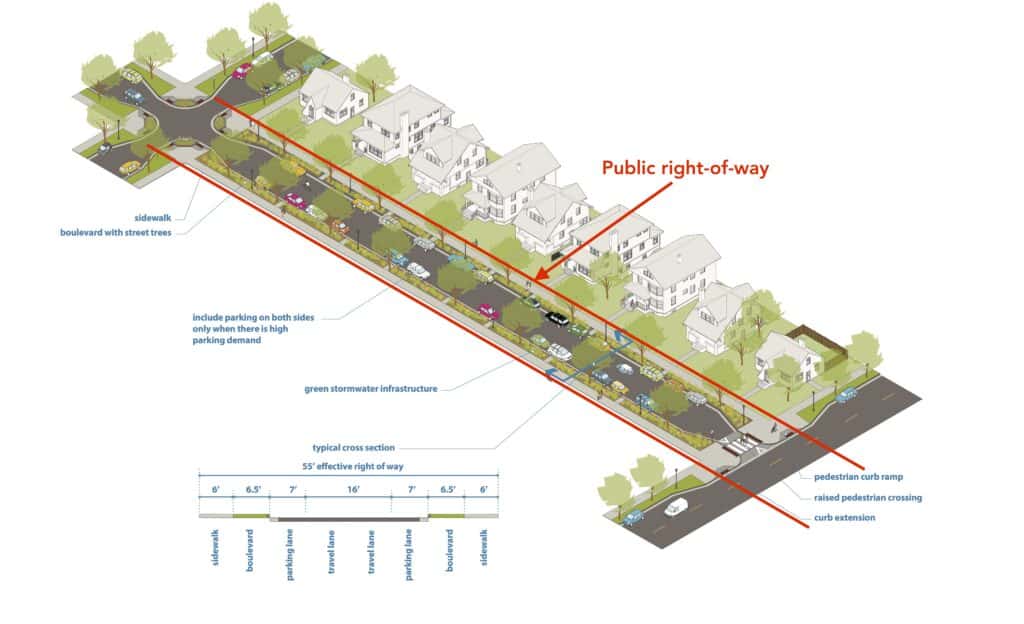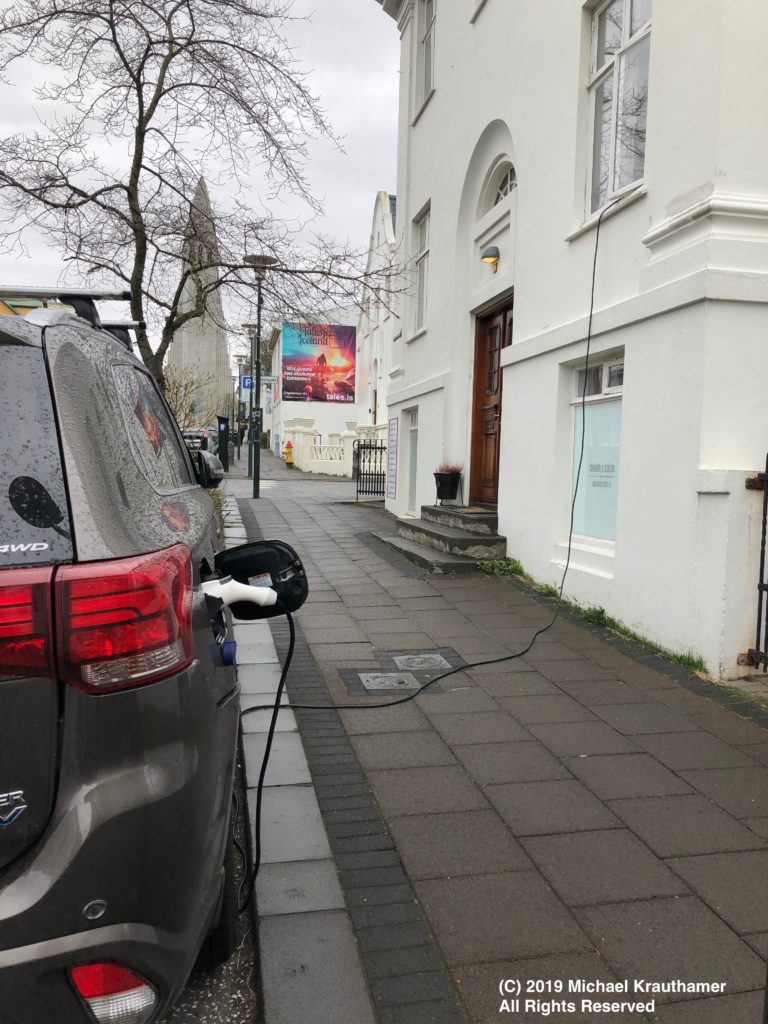The vast majority of electric vehicle charging takes place at home, which is a simple enough proposition for drivers who have their own garage or driveway. For those who live in dense urban neighborhoods where drivers struggle daily to finding parking, though, charging remains a significant challenge.
But what about those in the middle; those who park on the street but live in close-in neighborhoods where parking is ample and where residents effectively have a space to themselves in front of their home? Unfortunately for them, as a general rule, authorities having jurisdiction preclude residents from installing infrastructure in the right-of-way near the curb. This means that an extension cord has to be dragged over the sidewalk, presenting many obvious problems.

Shouldn’t there be a relatively easy solution? To date these drivers have had to make do with no official guidance and haphazard solutions. These solutions involve a wide variety of extension cords and ad-hoc safety contraptions that are typically only semi-effective at best, and dangerous at worst. Moreover, these homemade solutions risk running afoul of local safety regulations (as shown above).
In what is believed to the first of its kind, the District of Columbia has developed a set of guidelines that allow for curbside 120V (Level 1) charging. This is particularly significant for the District, which has many neighborhoods where drivers lack off-street parking but where residents effectively have a space to themselves in front of their house.
Level 1 charging is not optimal, because this speed offers only about 4 miles of range per hour. (A 100kWh EV would take more than two days to charge from empty.) Level 2, which provides about 25-30 miles of range per hour, would be far better. The District’s restriction to Level 1 likely arises out of concerns for electrical safety; given the high amperage in Level 2 chargers, extension cords must be extremely heavy-duty and should not exceed certain lengths. That said, even drivers charging at Level 1 would be advised to consult a professional about the length and gauge of the extension cord they plan to use to ensure the cord doesn’t overheat, melt, or get otherwise damaged from the elements during what will typically be very long charging sessions.
Notwithstanding these shortfalls, the District’s guidelines are a big step in the right direction because they explicitly allow a practice that previously was considered risky and/or unlawful. The guidelines include:
- Residents are not guaranteed a reserved parking space and cannot use signage or other means to reserve a parking space.
- Use only Level 1 (110-120V) charging equipment. No Level 2 (240V) charging cords may cross the public right-of-way.
- The EV charging cord shall cross perpendicular to the sidewalk to minimize obstacles to mobility.
- When not charging an EV, all equipment shall be removed from public space.
- All local parking regulations, both temporary and permanent, remain unchanged and shall be followed.
- Residents are responsible for complying with all relevant sections of the National Electric Code.
- Residents must use an outlet associated with their utility account.
- All equipment must be listed and installed per manufacturer’s instructions.
- All flexible cable used shall be suitable for the conditions of use and location.
- Flexible cables shall be suitably rated for equipment ampacity and power output.
- The rating of any cord and plug connected utilization equipment not fastened in place shall not exceed 80% of the branch circuit ampere rating.
- Residents are responsible for following all NFPA 70, National Electric Code regulations.
The guidelines also provide that charging cords must be covered by a highly visible, stable, and secure low-angle cable ramp while charging. A cover should remain highly visible at night; therefore, residents are encouraged to use reflective tape or colors that contrast with adjacent walking surfaces.
To comply with the Americans With Disabilities Act, the height of the cord cover must not exceed 1/2 inch, the ramp shall cover the charging cord completely across the sidewalk and can be no less than 4 feet in length; and the ramp shall be no steeper than a 50% grade or 1:2 gradient.

If the total height of the equipment (both cord and ramp) exceeds ½ inch in height, the following requirements apply:
- The ramp shall be no steeper than an 8.3% grade or 1:12 gradient;
- A 3 ft x 5 ft clear landing on the sidewalk must be on either side of the ramp;
- The ramp shall cover the entire width of the sidewalk and can be no less than 4 feet wide;
- A 5 ft x 4 ft or greater landing platform shall be at the top of the ramp;
- The landing must be flat, with no more than a 2% slope (1:50 gradient) in any direction; and
- Perpendicular to the direction of travel, the ramp cannot have a cross slope exceeding a 2% grade (1:50 gradient).

Ideally the District and other jurisdictions with similar housing and parking arrangements will develop a framework for residents to run 240V power to the curb so that they can fully charge overnight. This would entail a whole host of challenges, most notably a private citizen owning infrastructure in the public right-of-way which is home to many underground utilities. Other potential issues for permanent private infrastructure include aesthetics, setbacks, conflicts with other street furniture (such as lampposts, mailboxes, signs, and fire hydrants), cord management, and how to handle abandoned chargers.
There certainly are answers to each of these questions, and solving them will take time, but in the meanwhile it’s encouraging to see the District taking a small but very significant step in support of the city’s electric vehicles.
For more information about EVs and EV charging, I invite you to follow me on LinkedIn and view my other posts.

